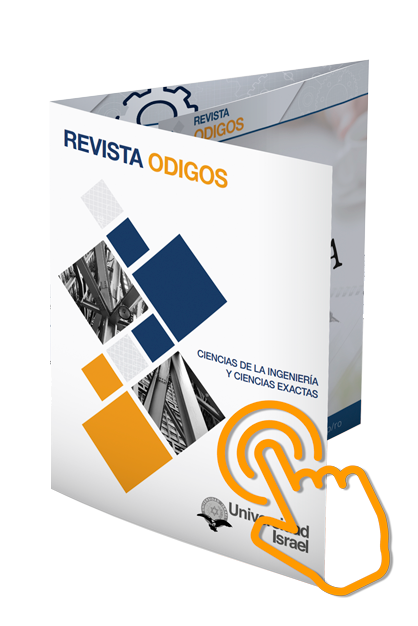Plataforma web de simulación de fenómenos físicos
DOI:
https://doi.org/10.35290/ro.v2n1.2021.407Palabras clave:
plataforma web, fenómeno físico, movimiento parabólico, prototipoResumen
El presente trabajo de investigación se centra en desarrollar una plataforma web para simular el fenómeno físico del movimiento parabólico para mejorar las estrategias de enseñanza - aprendizaje en instituciones de educación superior. Se utilizó la metodología SCRUM como marco de desarrollo para la gestión de proyectos y desarrollo ágil de software, mediante esta se pudo obtener el producto final. Tras realizar varias pruebas funcionales se pudo obtener datos estadísticos que permiten deducir que el prototipo web depende del usuario final, en cómo interpreta los datos de los ejercicios planteados y cómo ingresa los mismos como valores de entrada para que la aplicación internamente pueda procesar información y presentar resultados finales trazando la parábola que simula el movimiento deseado.
Descargas
Referencias
Abreu, J. L. (2014). El Método de la Investigación Research Method. Daena: International Journal of Good Conscience, 9(3), 195–204.
Almeida Campos, S., Febles Rodríguez, J. P., & Bolaños Ruiz, O. (1997). Evolución de la enseñanza asistida por computadoras. In Educación Médica Superior (1st ed., Vol. 11, pp. 31–38). http://scielo.sld.cu/scielo.php?script=sci_arttext&pid=S0864-21411997000100005
Amaya Balaguera, Y. D. (2015). Metodologías ágiles en el desarrollo de aplicaciones para dispositivos móviles. Estado actual. Revista de Tecnología, 12(2). https://doi.org/10.18270/rt.v12i2.1291
Díaz González, Y., & Fernández Romero, Y. (2012). Patrón Modelo-Vista-Controlador. Telematica, 11(2). https://www.revistatelematica.cujae.edu.cu/index.php/tele/article/view/15
Electronics -AGILE - Agile Software Technologies. (n.d.). Retrieved January 7, 2021, from http://virtual.vtt.fi/virtual/agile/mobiled.html
Emilio, G., Flores, V., Dolores, J., Ayala, R., Barraza, E. U., Agundis, D. U., Héctor, L., & Muñoz, G. (2015). Pruebas Operativas de Carga de Páginas Web Usando GTmetrix. Pistas Educativas, 36(114). http://gtmetrix.com
Kercher Greis, L., Reategui, E., & Iwaszko Marques, T. B. (2013). Vista de Un Simulador de Fenómenos Físicos para los Mundos Virtuales / A physical phenomena simulator for virtual worlds. Revista Latinoamericana de Tecnología Educativa, 12, 51–62. https://relatec.unex.es/article/view/893/743
Movimiento parabólico - SiPAQ. (n.d.). Retrieved January 20, 2021, from http://sipaq.webs.upv.es/movimiento-parabolico/
Reisa, Z. A. (2010). Computer supported mathematics with Geogebra. Procedia - Social and Behavioral Sciences, 9, 1449–1455. https://doi.org/10.1016/j.sbspro.2010.12.348
SCRUM – Proyectos Ágiles. (n.d.). Retrieved November 26, 2020, from https://proyectosagiles.org/que-es-scrum/
Toasa, R., Burbano, E., Constante, A., Hidalgo, L., & Morales, F. (2019). A Custom and Dynamic Game using Gamification Techniques to Children from 4 to 5 years old. 2019 14th Iberian Conference on Information Systems and Technologies (CISTI), 1–5. https://doi.org/10.23919/CISTI.2019.8760593
Velasco, C., & Carlos, J. (2017). La Educación Superior en el Ecuador. Situación actual y perspectivas de futuro desde el contexto de las Tecnologías de la Información y la Comunicación. [s.l.]: [s.n.]. http://www.dspace.uce.edu.ec/handle/25000/13671
Publicado
Número
Sección
Licencia
Derechos de autor 2021 Ángel Eduardo Gualán Lozano

Esta obra está bajo una licencia internacional Creative Commons Atribución 4.0.
Los autores que participen de los procesos de evaluación y publicación de sus ediciones conservan sus derechos de autor, cediendo a la revista el derecho a la primera publicación, tal como establecen las condiciones de reconocimiento en la licencia Creative Commons Reconocimiento 4.0 Internacional (CC BY), donde los autores autorizan el libre acceso a sus obras, permitiendo que los lectores copien, distribuyan y transmitan por diversos medios, garantizando una amplia difusión del conocimiento científico publicado.
- Toda derivación, a partir de esta obra, deberá citar la fuente y a la primera publicación en esta revista. Se permiten derechos comerciales no lucrativos sobre sus contenidos.
- Los autores pueden realizar otros acuerdos contractuales independientes y adicionales para la distribución no exclusiva de la versión del artículo publicado en esta revista, es decir, podrán incluirlo en un repositorio institucional o publicarlo en un libro, siempre que indiquen claramente que el trabajo se publicó por primera vez en esta revista.
- Se permite y recomienda a los autores compartir su trabajo en línea, con la finalidad de intercambios productivos para una mayor y más rápida citación del trabajo como lo establece los efectos del movimiento ‘Acceso Abierto’.
- No puede aplicar términos legales o medidas tecnológicas que restrinjan legalmente a otros de hacer cualquier cosa que permita la licencia: https://creativecommons.org/licenses/by/4.0/deed.es
- La Revista ODIGOS es financiada completamente de los aportes realizados por nuestra entidad editora: Universidad Tecnológica Israel; por tal motivo, no establece cargos o cobros de ninguna índole a sus autores y colaboradores, así como tampoco genera pagos o remuneraciones de ningún tipo a ellos.
- Se asignará un Digital Object Identifier (DOI) a cada publicación.




